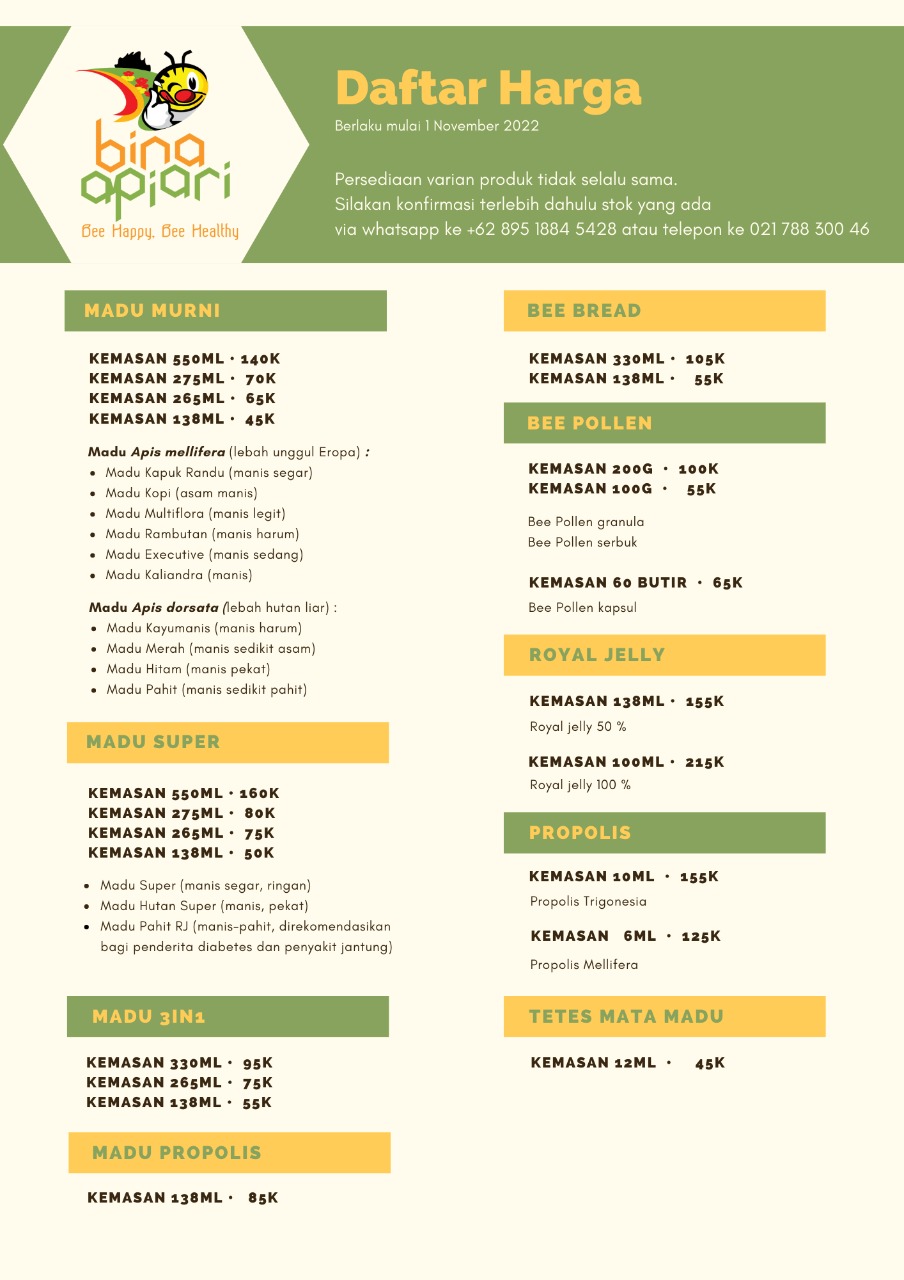Previous Article http://madubinaapiari.co.id/value-added-products-from-beekeeping-10/
3.12.6 Pollen supplements and substitutes in beekeeping
Haydak (1967) successfully tested a soybean flour, dried brewer’s yeast and dry skimmed milk mixture in the proportions of 3:1:1. As a pollen substitute fed to honeybee colonies during a period of shortage, the mixture stimulated early colony development and overcame pesticide damage. One kilogramme of this substitute should be mixed with 2 litres of a concentrated sugar syrup in order to make it attractive to the bees. The sugar syrup is mixed in proportions of 2 parts granulated sugar with 1 part of hot water. A few egg yolks can be added as well and the mixture should be left standing overnight. The final consistency should be such that the paste stays on top of the frames, preferably wrapped in wax paper to prevent it from drying out.
Pollen supplements can be mixed from dried bee-collected pollen and various types of sugar syrup. However, the nutritional value of pollen (as larval food) deteriorates with time and under certain storage conditions as described in section 3.8. A more detailed discussion on this subject can be found in Dietz (1975).
3.12.7 Cosmetics
The claims attributed to the cosmetic effects of pollen have not been proven nor do pollen-based products seem to outperform alternative non-allergenic products. Given the risk to a growing percentage of allergic customers, it is not possible to recommend use of pollen in commercial products. If one wants to include pollen in personal cosmetics, the pollen pellets should be well dried and carefully ground to a very fine powder. They are likely to remain slightly abrasive, but can be ground further. The powder is mixed without heating at 1 % or less into any preferred preparation. Some alcoholic extracts, appear to cause no allergic reactions. Unfortunately, nothing is known about their effectiveness. For recipes see Chapter 9.


